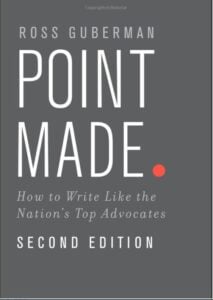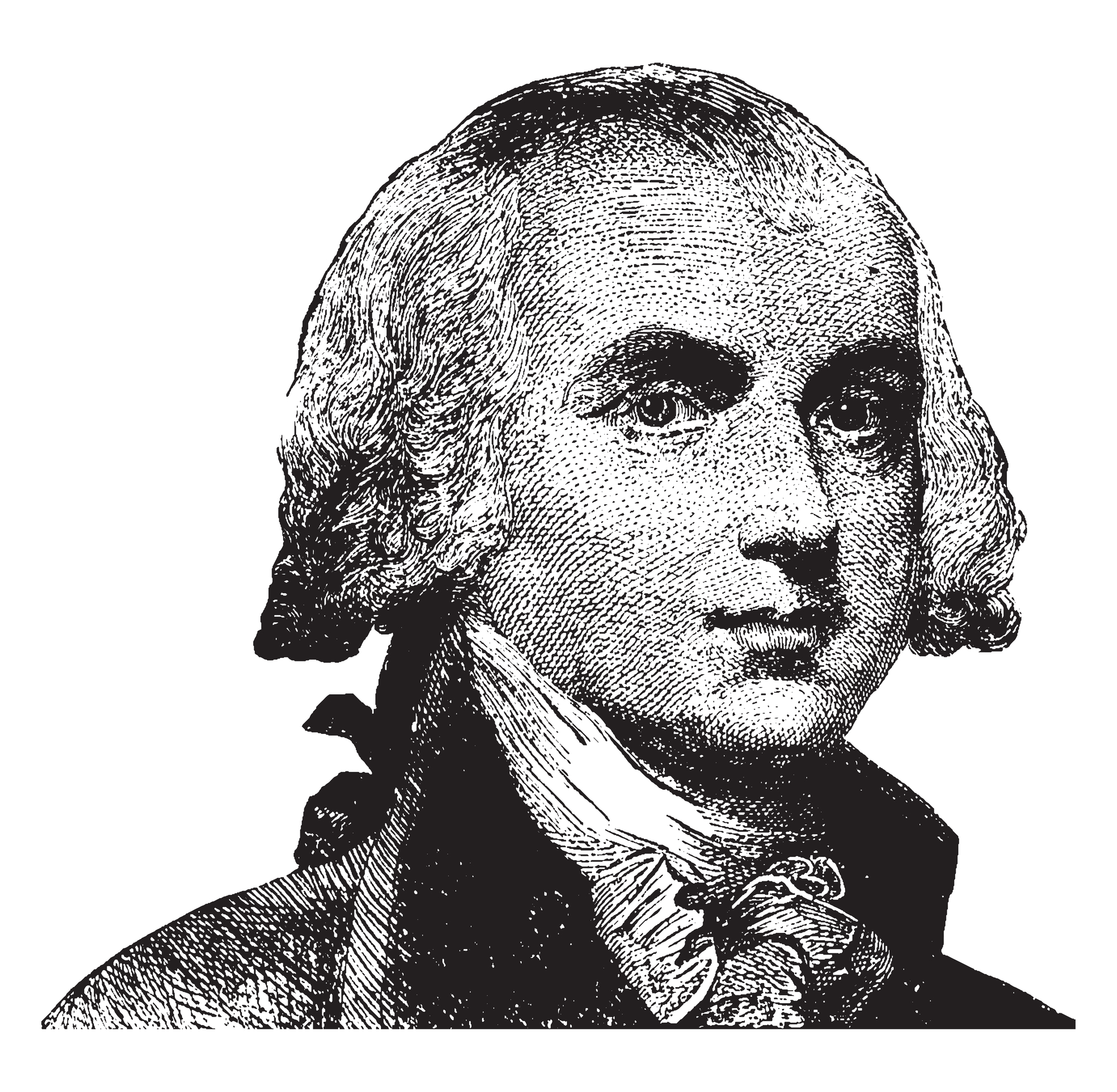50 Advocacy Writing Exercises
Here are 50 writing challenges based on the 50 techniques in my Point Made: How to Write Like the Nation’s Top Advocates. Enjoy!
Introductions
- Brass Tacks. In one sentence each, answer these five questions about a dispute: Who are the parties and what is their relationship? What question does the dispute seek to answer? When did the dispute arise? Where did the dispute arise? Why is your client in the right? Now mold those answers into a short narrative that explains your case and puts your client in the best light.
- The Short List. List three or four reasons a court should do what you want the court to do about the narrative you just shared. Now type the word “because” after each reason and add one more layer of specificity.
- Why Should I Care? Without citing any case law or other authorities explain in your own words why it would be bad if your adversary won the dispute.
- Flashpoint. Fill in these blanks for two cases. The dispute is about ____________, not ____________. To decide this motion, the Court need not decide ____________; it need only decide ____________.
Fact Sections
- Panoramic Shot. Pick a dispute with complicated facts. Write a short opening overview paragraph that sets the stage.
- Show, Not Tell. Think of a quality or trait that you’d like the court to associate with you—or with your adversary. Now write two or three facts that “show” that trait in action. Use no adjectives or adverbs, and do not “tell” the court what to conclude about those facts.
- Once Upon a Time. In a fact section, find at least one date that you could cut and at least two dates that you could replace with a phrase like “two days later.”
- Headliners. Write at least four fact-section headings, all in the present tense, that flow from the one before, and that favor the party you represent.
- Back to Life. Pick a technological device. Write a paragraph describing how it works. Anchor your sentences on the phrase “the user” rather than on various features of the technology itself.
- Poker Face. Write two sentences about two unfavorable facts. Start each sentence with “Although” or “Even though,” and end each sentence by putting the bad fact in the best possible light.
- End with a Bang. Rewrite the end of a fact section by leaving the court with a final image or thought.
Structure
- Russian Doll. Draft several headings and subheadings that consist of complete thoughts and that form logical units.
- Heads I Win, Tails You Lose. Draft three headings in which the second and third headings start with the phrase “Even if.”
- Sneak Preview. Take a section of an argument in which the lawyer jumps from Argument to the first roman numeral, or from a roman numeral to the letter A. Now add a short umbrella passage to introduce the headings or subheadings to come.
- With You in Spirit. Take a heading you’ve drafted and ask yourself what questions the court would need answered before endorsing that heading. Put those questions in the most likely logical order. Now answer each question and make those answers the openings of your paragraphs.
- Sound Off . Take another heading you’ve drafted that lends itself to a numbered list of points in support. Draft that list and make the enumerated reasons the openings of your paragraphs.
Working with Authorities
- Long in the Tooth. Find three ways to complete this sentence: “Courts have long held that in cases such as this one, ____________.”
- Peas in a Pod. Take a case you want to analogize. In a single paragraph, compare every key point of similarity and difference. Use both “like this case” and “unlike this case.”
- Mince Their Words. Find a sentence in a motion or brief that’s really just a sentence quoted verbatim from an opinion or judgment. Rewrite the sentence by starting with your own words, and only then weaving in some short phrases from a quoted passage.
- One Up. Complete this sentence: “[Opponent] cites [case], but that case applies even more to [client] because ____________.”
- Complete this sentence: “Although [opponent] cites [case] in its favor, if anything that case helps [client] because ____________.”
- Rebound. Complete this sentence: “[Opponent] claims that [the case I have cited] is distinguishable, but [the distinction] does not matter: ____________.”
- Not Here, Not Now. Complete this sentence: “[The case that opponent cites] is different from this case: ____________.”
- One Fell Swoop. Complete this sentence: “In all these [cases that my opponent cites], the court ____________, not ____________.”
- Not So Fast. Complete this sentence: “Although [the case that my opponent cites] might have suggested that ____________, it did not hold that ____________.”
- Authority Problems. Complete this sentence: “Th e Court should not follow [old or illogical case that cuts against you] here: ____________.”
- Ping Me. Draft three or more case parentheticals that begin with a participle like “affirming” or “awarding” and that then explain how the reason the court did what it did there proves a broader point you’re making about the law here.
- Speak for Yourself. Reduce a long quotation to a parenthetical that consists solely of a single-sentence quotation.
- Hybrid Model. Draft at least two parentheticals that combine a participle like “affirming” or “awarding” with key quoted language.
- Lead ‘Em On. Rewrite the introductions to three block quotes by introducing them not with the topic of the quotation but with the gist of the quotation.
- Race to the Bottom. Take several motions or briefs in which the attorneys used footnotes for something other than case citations. Decide whether you think that the material in each footnote should have been (1) in the body itself, (2) as is, in footnote form, or (3) nowhere at all.
- Zingers. Take a motion or brief. Replace at least five of the original verbs or verb phrases with new verbs that are shorter, more vivid, or both.
- What a Breeze. Read a page of an argument section aloud. Each time the writing sounds heavy or awkward, imagine how you’d make the same point orally. Transcribe the results.
- Manner of Speaking. Enliven a dull passage by incorporating a metaphor or a figure of speech.
- That Reminds Me. Pick a legal concept or doctrine that is hard to explain or understand. Write a passage explaining it that begins with the word “Take” or “Suppose” or “Consider” and that then develops the point through a hypothetical.
- The Starting Gate. Find at least ten sentences beginning with “However,” “Nevertheless,” “Accordingly,” “Moreover,” “Additionally,” or “Consequently.” Recast those sentences by beginning with a short transition word or by moving a short transition word inside the sentence near the verb.
- Size Matters. Find three sentences that last for more than a line, and then shorten each to seven words or fewer.
- Freight Train. Find a passage in which an attorney writes several sentences in a row that each begin with something a court did. (Example: “The Court noted . . . The Court added . . . Additionally, the Court emphasized . . .”) Turn the list into a single Freight Train sentence.
- Leading Parts. Find a few sentences that begin with “Therefore” or “Accordingly.” Now look at the preceding sentence and combine the two into a single Leading Parts
- Talk to Yourself. Draft two rhetorical questions that go to the core of a key legal or factual issue in your case.
- Parallel Lives. Complete this sentence: “In [doing something that my client doesn’t like], [my opponent] ____________, ____________, and ____________.” Make sure that the language in the three blanks is all in parallel form.
- A Dash of Style. Draft two sentences with a pair of internal dashes to emphasize a word or phrase, and then draft a single sentence with a dash at the end to introduce a trailing thought.
- Good Bedfellows. Draft two sentences in which you use a semicolon to highlight a likeness or a contrast.
- Magician’s Mark. Draft two sentences in which you use a colon rather than language like “because” or “since” or “due to the fact that.”
- Take Me by the Hand. Pick ten transition words or phrases. Write a passage that uses all ten.
- Bridge the Gap. Find some paragraph openers that do not follow logically from the end of the paragraph before. Recast those paragraph openers by repeating a word, phrase, or idea from the end of the previous paragraph.
- Join my Table. Transform an ordinary prose passage into a table or chart.
- Bullet Proof. Transform a dense paragraph into several bullet points or a numbered list.
Conclusions
- Parting Thought. Find a conclusion that consists of a throwaway line beginning with such language as “For all of the foregoing reasons.” Consider whether the end of the argument serves the function of a conclusion, and if not, rewrite it so that it does.
- Wrap-Up. Draft a conclusion for a motion or brief that incorporates a final thought or a new quotation.

 By
By



